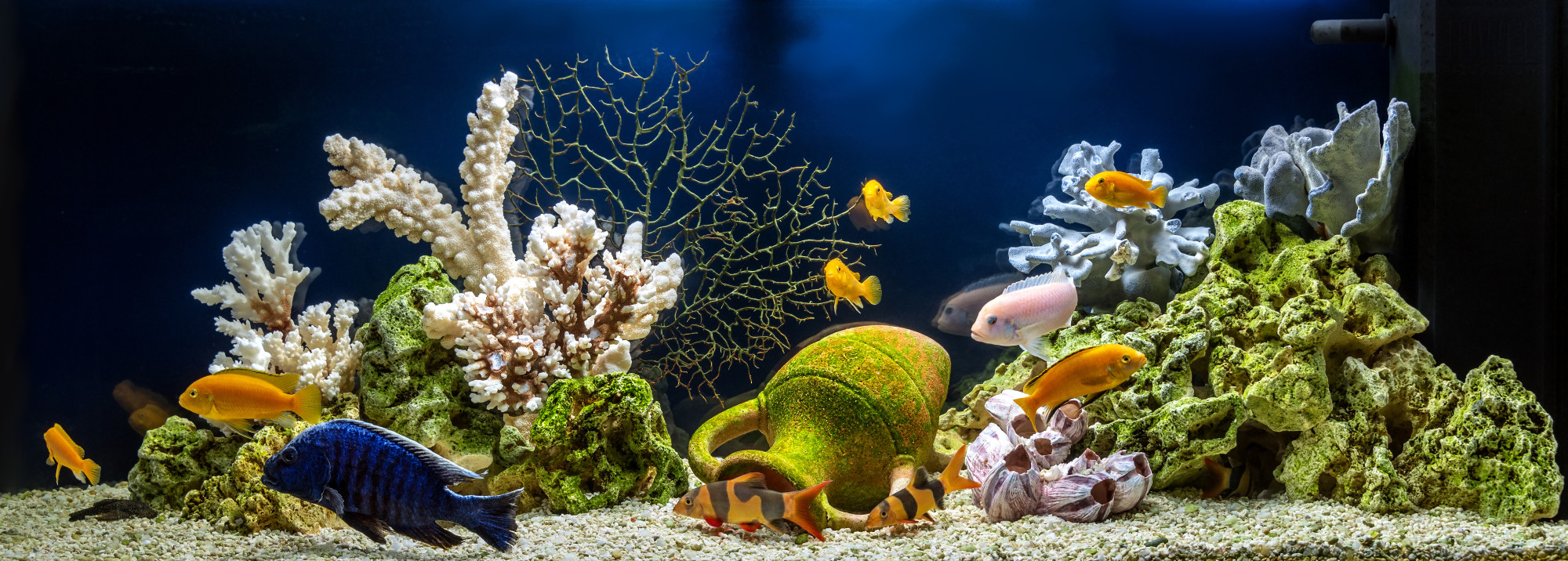Quarantine making you miss the ocean or river? Bring the ocean and rivers to you, make an aquarium! Owning fish and an aquarium might be the change you need in your life.
Did you know that owning an aquarium helps reduce stress and improves mental health? Fish are also an effective therapy for disruptive behaviors in children. Start a home aquarium with these easy steps!
1. Fish are Friends, Not Food
Before you start a home aquarium, keep in mind that fish are living creatures too! Before buying an aquarium, invest time in learning about fish first. You can’t buy just any fish when starting an aquarium.
Some fish species are incompatible, and others grow way bigger than other fish. Take the time to look for reputable stores in your area and learn about tank builds. When choosing a tank size, use the inch-per-gallon rule.
The inch per gallon rule means that a 2-inch fish needs 2 gallons of space. Remember that fish aren’t food or decorations but living creatures. Living creatures need space and have particular needs, so make sure to know them before getting one.
2. Good Starter Pack
You might want to dip your toes in the pond before diving in. Try out a starter aquarium to know if this hobby is right for you. A good starter pack includes:
- 40-50 gallon tank
- Water conditioner
- Fish filter
- Air pump
- Aquarium heater
- Substrate
- Lighting
- Fish aquarium test strips
- Utilitarian species
- Beginner fish species
Some malls sell premade starter packs, but it’s best to beware of these. Most of them do not have the space a fish requires, so it’ll be better to build your own home aquarium. You will also want to start out with high-quality distilled water. However, trying to fill a tank with water bottles from the store will be wasteful and costly. Instead, google “where can I buy distilled water” to find a water provider near you that sells 5-gallon tanks. This will save you money and cut back on plastic waste.
3. Creating an Ecosystem
In an aquarium, all-natural makes for a better ecosystem. Try to get real aquatic plants instead of fake plastic ones. You also want to look for live rocks and sand.
While coral may seem like a great addition to your aquarium, it’s not for every fish. You also want a good substrate for your fish to thrive in.
While it seems like a good idea to improve your tank with corals, note that they are high maintenance. You can make use of other natural materials like sand and hornwort.
4. Common Starter Mistakes
Always let the tank set first, and don’t add fish until pH stabilizes. It’s also best to test the water first to ensure that it’s safe for your fish. Fish owners also use a process called acclimation to help their fish settle in their new tank.
You also want to avoid insufficient filtration and overfeeding your fish. Not all fish species are compatible, so make sure to add one new species at a time to avoid fighting. Always keep note of all fish needs, like proper pH levels and feeding times.
5. Maintenance
This doesn’t end with how to set up an aquarium; aquariums have maintenance too! Here are things to keep in mind:
- Remove dirt and algae monthly
- Change the water once a month
- Vacuum the substrate
- Clean the filtrate monthly
- Refill the water monthly
Always refill the water in your tank with set and pH-balanced water. Proper water conditioning is a sure way for your fish to have a long and healthy life.
Did you know some species can help you keep your tank clean? Learn more about live copepods here!
Make a Splash With a Home Aquarium
Now that you know how to set up an aquarium, you are sure to make a splash with your guests! Fish are great pets if your building doesn’t allow cats or dogs.
Want to know more about how you can improve your home aquarium? Check out our other blog posts, get more useful information, and start your own aquarium!






